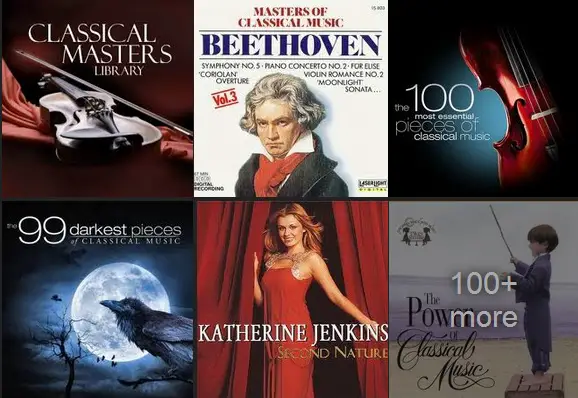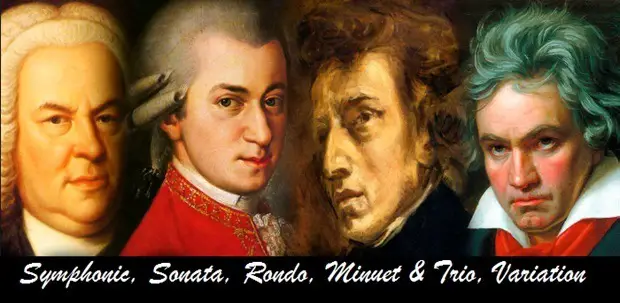
Here’s a simplified guide on Musical Forms and why its makes sense to know about them.
Ok, so you’re a music student or are just fond of listening to various kinds of music and have just won a ticket to a classical concert. And the guy/girl next to you says that the performers are playing Beethoven’s fifth symphony!
Now you may be aware that Beethoven was a great composer, but what about ‘symphony’? You might have heard the word before but its very likely that you have no clue about what it means.
Well, symphony is a form of classical music, and there are many more forms that we will touch upon here.
What Do You Mean By a Musical Form?
A musical form (or musical architecture) basically means the structure of a piece of music. Every music composition is divided into various sections based on a structure. Here are some of the popular musical forms, commonly found in classical music.
If you have seen the lyrics of any popular song, you may have seen that the song is usually composed of sections like chorus, bridge, verse, and so on.
That’s what a musical form is, but its spoken of more commonly in classical music.
A musical form is basically the arrangement of the various sections within a piece of music.
Why Should You Know About Musical Forms?
If you like listening to classical music, understanding about musical forms and how the various sections in a classical piece work together can help you understand better what the composer is trying to express, and also appreciate his/her efforts.
However, if you’re a serious music student, doing you major in music, or a budding composer, you need to know the various musical forms, so that you can compose a classical piece, if you’re asked to (as part of your work or college work).
Great composers like Bach, Mozart, Beethoven, Schubert (and all modern composers) knew about musical forms. Its a tool used by all composers to create music.

Lets learn more about the fundamentals of classical musical forms.
Sonata Form
Sonata form is the most commonly found musical form in classical music, and it looks like this:
Intro (usually slow, it sets the mood)
Exposition
Theme A (in home key)
Transition….
Theme B (in secondary key)
Development
Theme A + Theme B fight it out
Recapitulation
Theme A (in home key)
Transition…
Theme B (now in home key)
Coda
You will find this in almost every symphony, and here’s what it means.
Basically it revolves around two independent musical ideas, lets call them theme A and theme B. Each “theme” isn’t just a melody, but a whole passage of music which might have tempo changes, accompaniments, changes in volume, etc. In sonata form the themes first get played one after the other (which is called the exposition), and then they start duking it out, during the “development”. The development is usually the most interesting and intense part of the movement. It’s where the two themes are chopped and mixed and blended together until it all reaches some sort of climax. Then finally the themes are again played one after the other (the “recapitulation”), but this time the keys are changed slightly, so that the whole movement ends in the “home key”.
There is also usually an intro and an coda (a fancy word for an “outro”) as well as lots of transitions between the themes.
Theme and Variations
Theme and variations looks like this:
Theme A
Theme A with bits added
Theme A with even more bits added
Theme A with different bits added in a totally different tempo
Theme A in 10 different keys
And so on…
This starts with a relatively simple musical theme being played, and then cycles through a bunch of repeats, but with each repeat modified. The modifications can be so extreme that you have to listen to them a bunch of times before you can tell they are related to the initial one.
It’s really neat, because once you “get” the theme, it’s really easy to watch how it grows and changes throughout the movement.
Trio
This one was more popular in the ye olde days of classical music. It goes like this:
Theme A
Theme B (usually in 3/4 time)
Theme A
It’s pretty straightforward compared to sonata form. It’s like a theme sandwich. The middle bit is traditionally in 3/4 time (like a waltz).
Rondo
This one used to be really popular as the last movement of a symphony. It goes like this:
Theme A
Theme B
Theme A
Theme C
Theme A
Theme D
And so on…
Basically there is one piece of music which the orchestra keeps returning to. In between these repeated sections are lots of other musical diversions, which might vary a lot in tempo, key, intensity. At the end of each of these sections we go right back again to the familiar theme A.
Source: getintoclassical.com
KeytarHQ editorial team includes musicians who write and review products for pianists, keyboardists, guitarists & other musicians. KeytarHQ is the best online resource for information on keyboards, pianos, synths, keytars, guitars and music gear for musicians of all abilities, ages and interests.



Leave a Reply